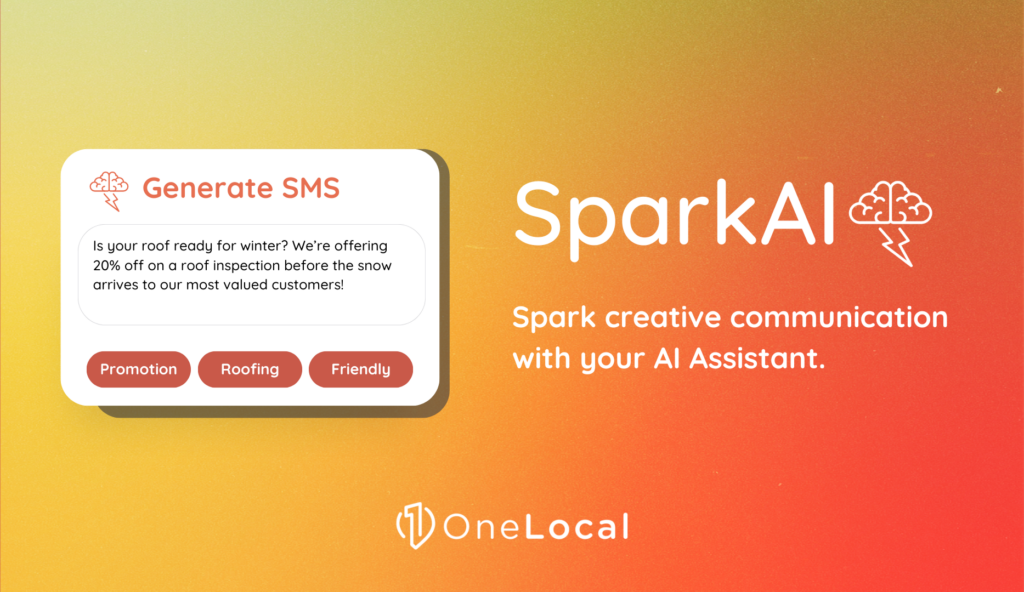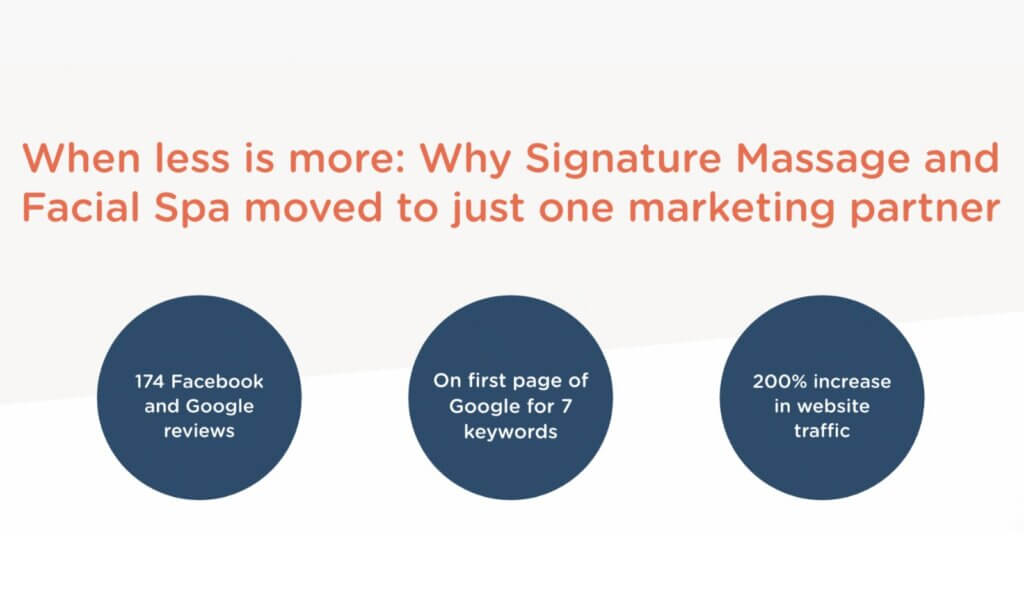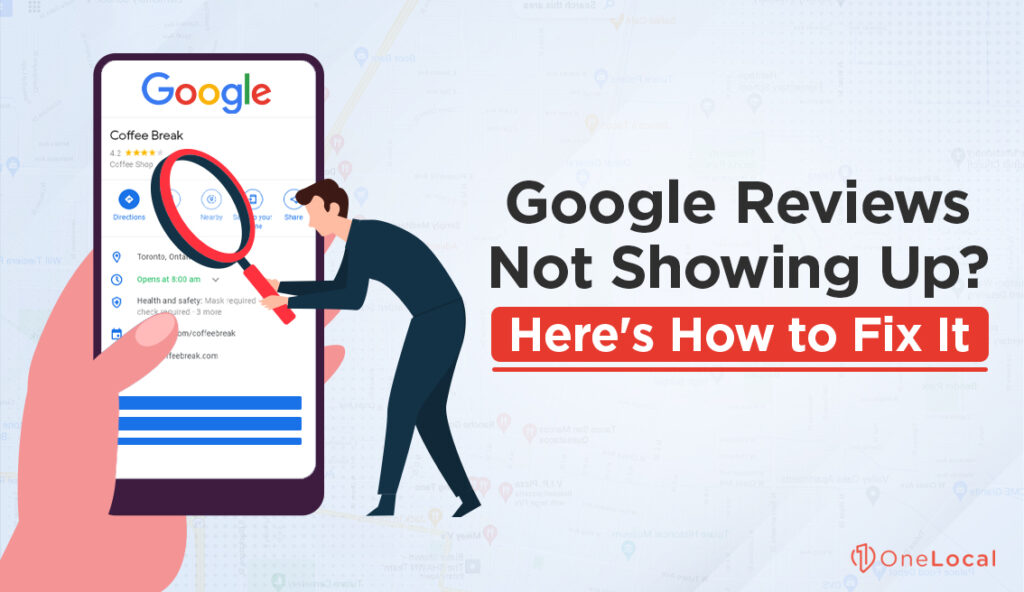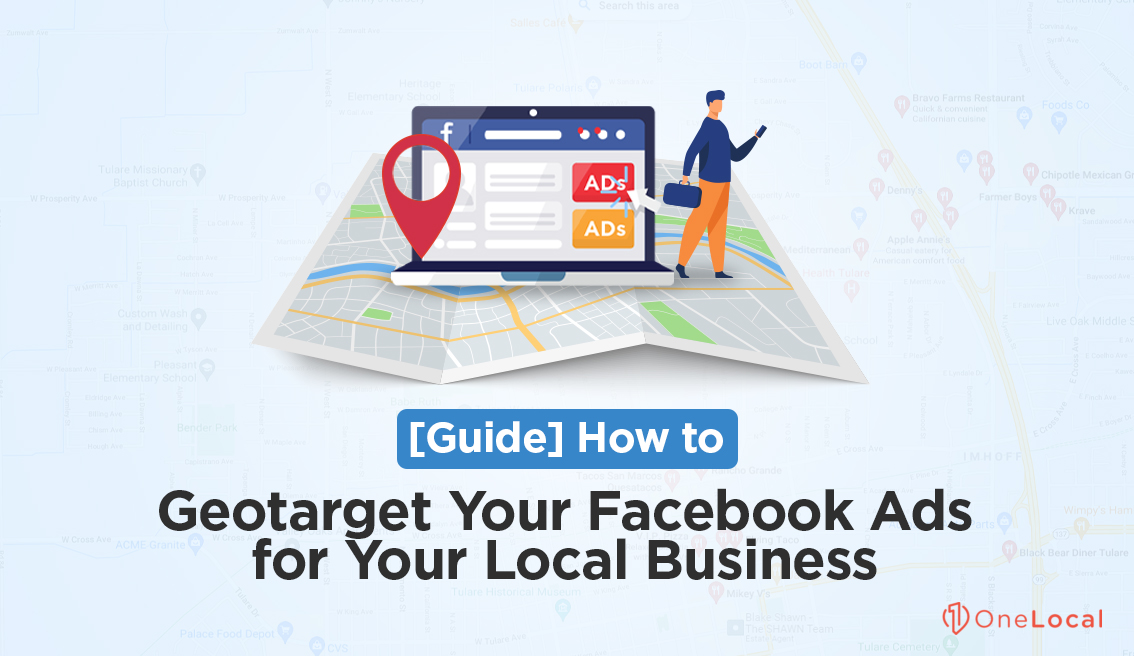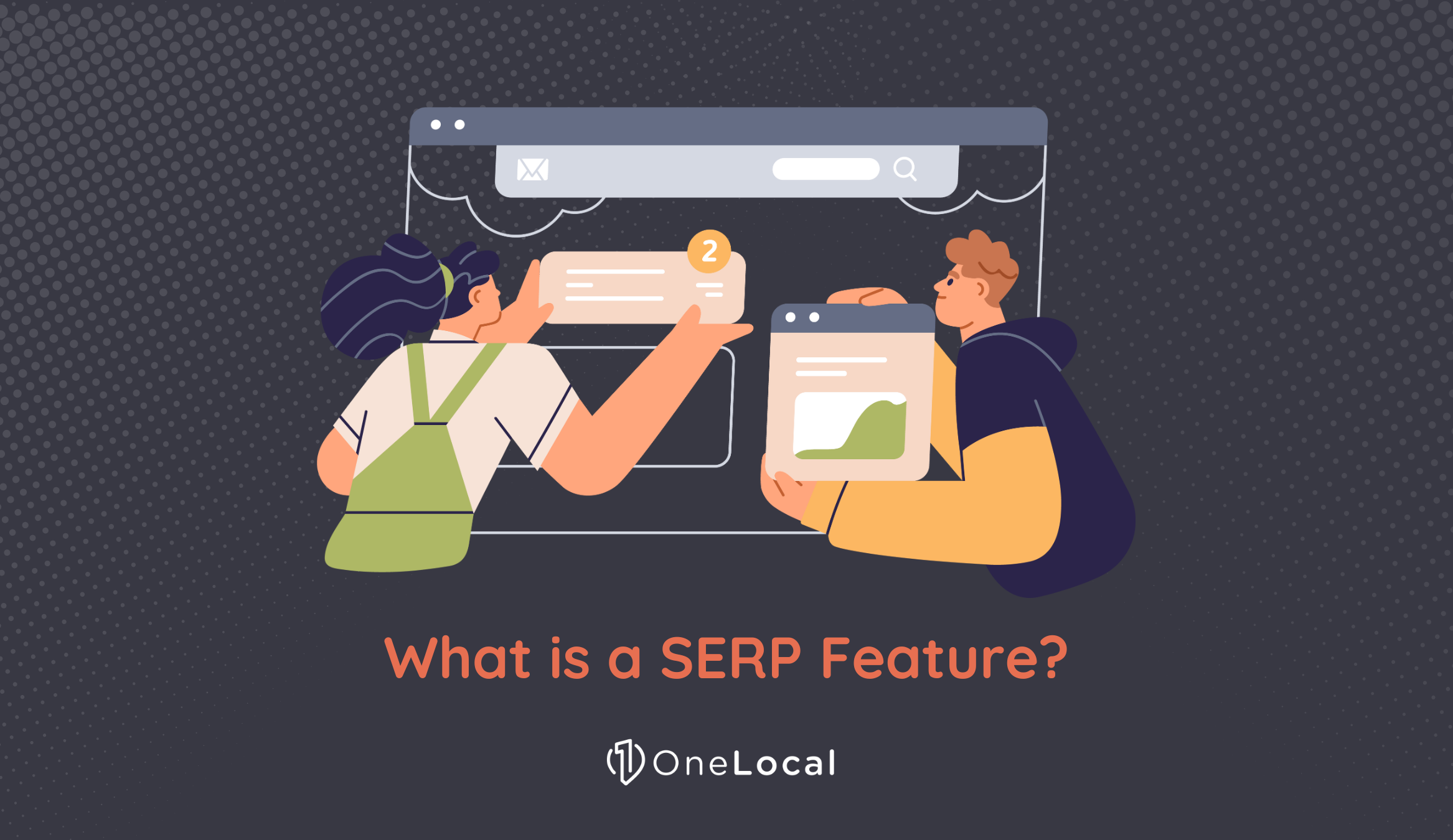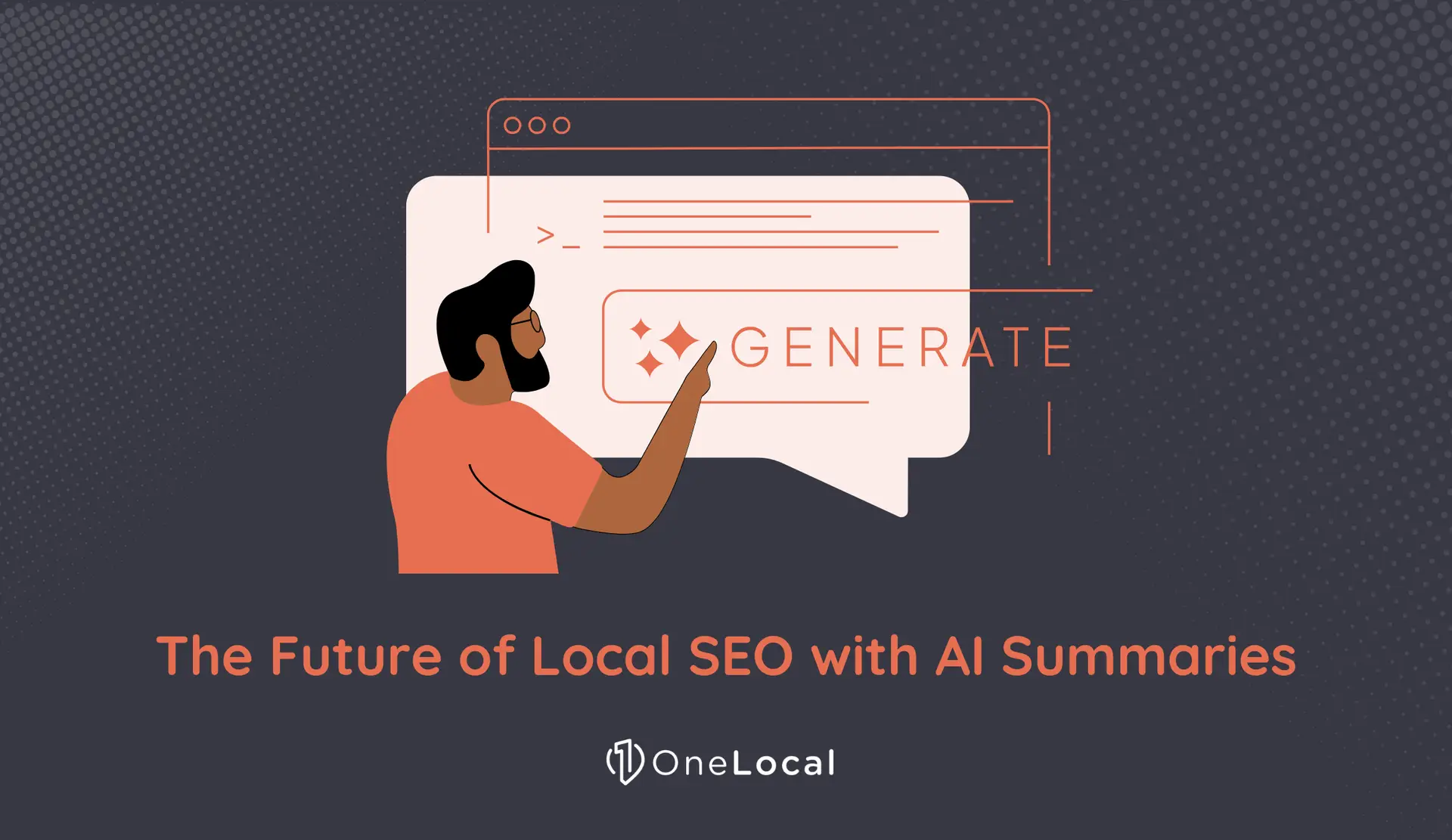While the internet is a very powerful platform for small businesses, it is not without its downsides. A small business can advertise to significantly more people than could ever be imagined 50 or 100 years ago using tools like social media. On the other hand, for a local business, the majority of those people might not even be relevant.
If you’re operating a local business, you likely have a limited service area. You might only be able to operate within a reasonable distance of your home base, or only attract customers within an area where it’s reasonable for them to visit your store. Even with the option to ship products to buyers online, shipping costs might be such that you don’t want to deal with it.
This means that a local business in Kansas can use the internet to reach people in New York and Los Angeles, but those people cannot become customers outside of exceptional circumstances. What good is advertising to those people, then?
Luckily, modern technology has developed a solution. That solution is geolocal advertising, using geotargeting and geofencing.
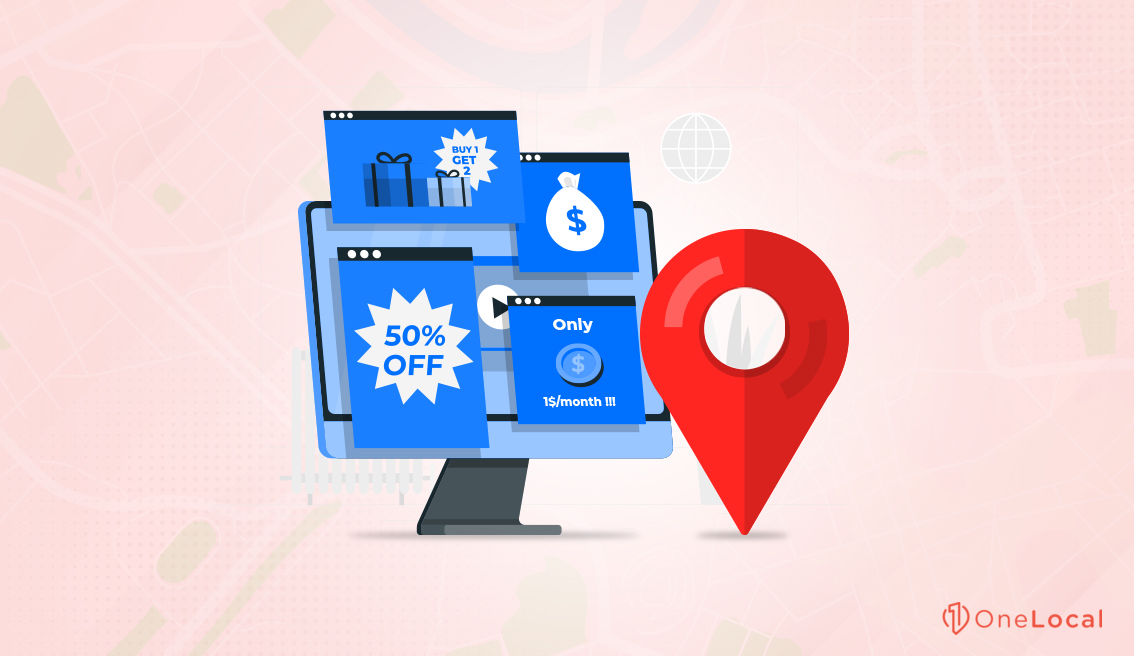 This offers a solution to the problem posed above. You can still invest in online advertising, but you can be assured that the only people you’re reaching with your advertising are those who have a chance to become customers, as opposed to reaching millions of people who have zero chance of converting.
There are two kinds of geolocal targeting: geotargeting and geofencing. Sometimes these terms are used interchangeably, but they are slightly different techniques with different use cases.
This offers a solution to the problem posed above. You can still invest in online advertising, but you can be assured that the only people you’re reaching with your advertising are those who have a chance to become customers, as opposed to reaching millions of people who have zero chance of converting.
There are two kinds of geolocal targeting: geotargeting and geofencing. Sometimes these terms are used interchangeably, but they are slightly different techniques with different use cases.
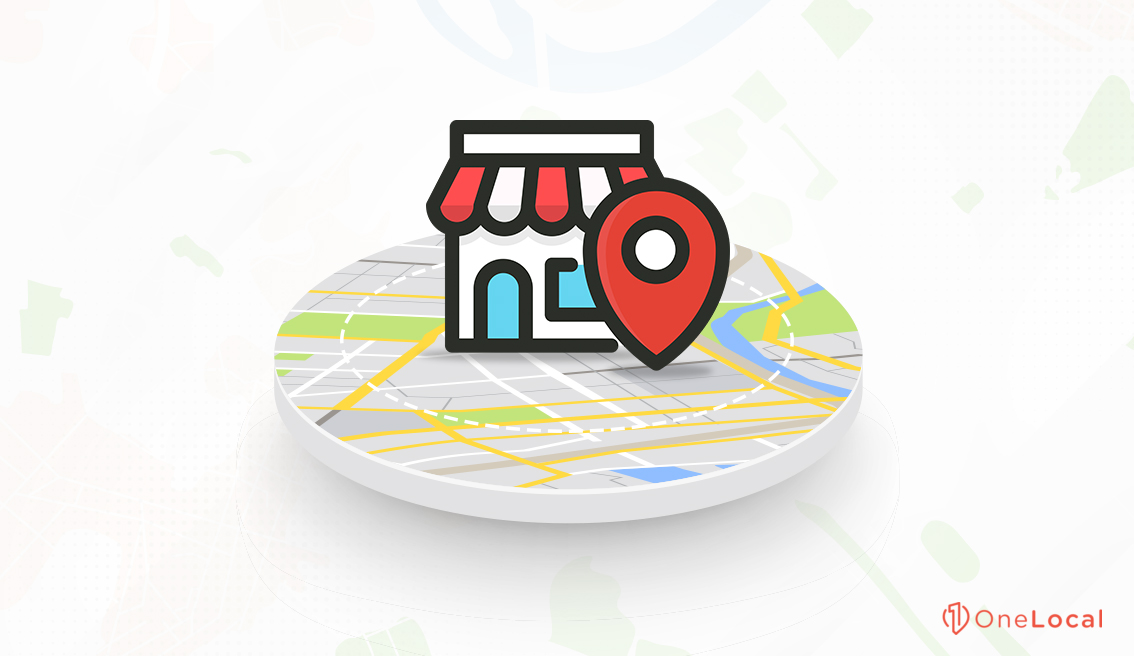 Geofencing is powerful, but it’s narrow. Since an area can have ebbs and flows of traffic depending on the time of day, on events, and varying schedules, the number of people reached with ads can vary dramatically. Narrow targeting can also be expensive, so often these kinds of ads are restricted to special events when a larger number of people are clustered in the area.
Geofencing also frequently lacks additional targeting options. It’s all-or-nothing advertising for people within the fence and is not selective within that boundary.
Geofencing is powerful, but it’s narrow. Since an area can have ebbs and flows of traffic depending on the time of day, on events, and varying schedules, the number of people reached with ads can vary dramatically. Narrow targeting can also be expensive, so often these kinds of ads are restricted to special events when a larger number of people are clustered in the area.
Geofencing also frequently lacks additional targeting options. It’s all-or-nothing advertising for people within the fence and is not selective within that boundary.
 Geotargeting can be a positive filter or a negative filter. That is, it can include everyone within a certain area around a location, or it can exclude a certain location from targeting. This can be useful if you have two branches or franchises, and don’t want ads to overlap and direct users to the further location when a closer one is nearby.
Geotargeting can be a positive filter or a negative filter. That is, it can include everyone within a certain area around a location, or it can exclude a certain location from targeting. This can be useful if you have two branches or franchises, and don’t want ads to overlap and direct users to the further location when a closer one is nearby.
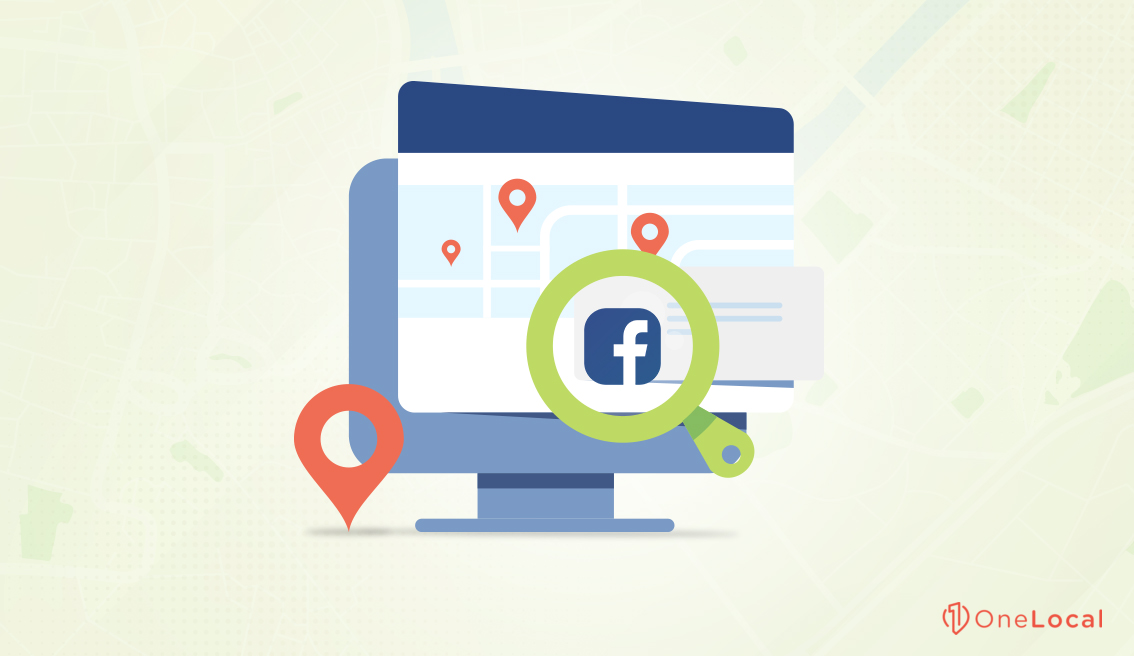 Facebook makes use of geotargeting. When you create an ad in the Facebook ads manager, you can add targeting options, including interests, behaviors, and demographics. Depending on your ad objective, you may also be able to add geotargeting as well. Most, though not all, ad objectives allow you to use geotargeting. Facebook is also currently in the process of rolling out more consolidated ad objectives, so this may change in the upcoming future.
To use geotargeting in your advertising:
Create an ad campaign.
Facebook makes use of geotargeting. When you create an ad in the Facebook ads manager, you can add targeting options, including interests, behaviors, and demographics. Depending on your ad objective, you may also be able to add geotargeting as well. Most, though not all, ad objectives allow you to use geotargeting. Facebook is also currently in the process of rolling out more consolidated ad objectives, so this may change in the upcoming future.
To use geotargeting in your advertising:
Create an ad campaign.
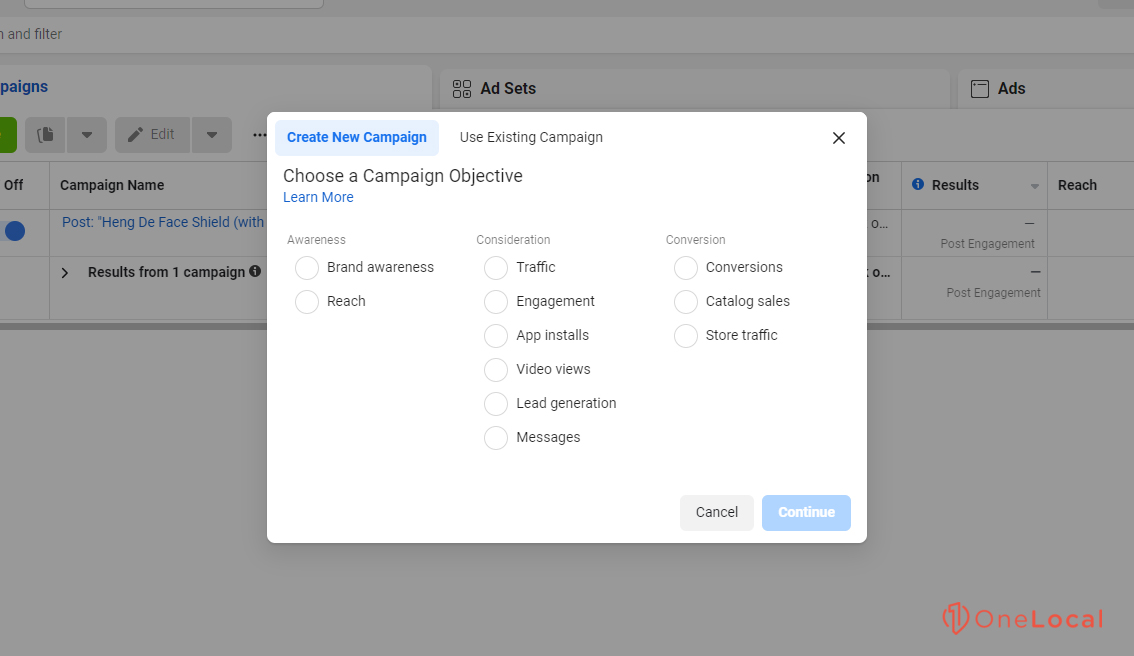 Choose a campaign objective.
Choose a campaign objective.
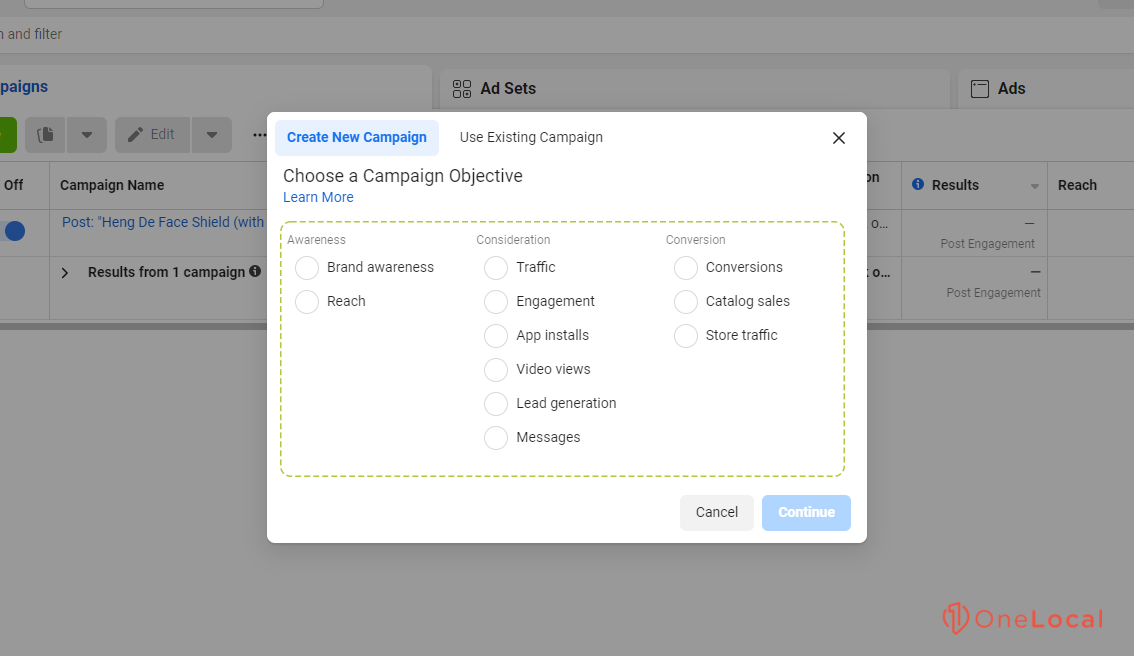 Choose an audience source, if you have one.
Choose an audience source, if you have one.
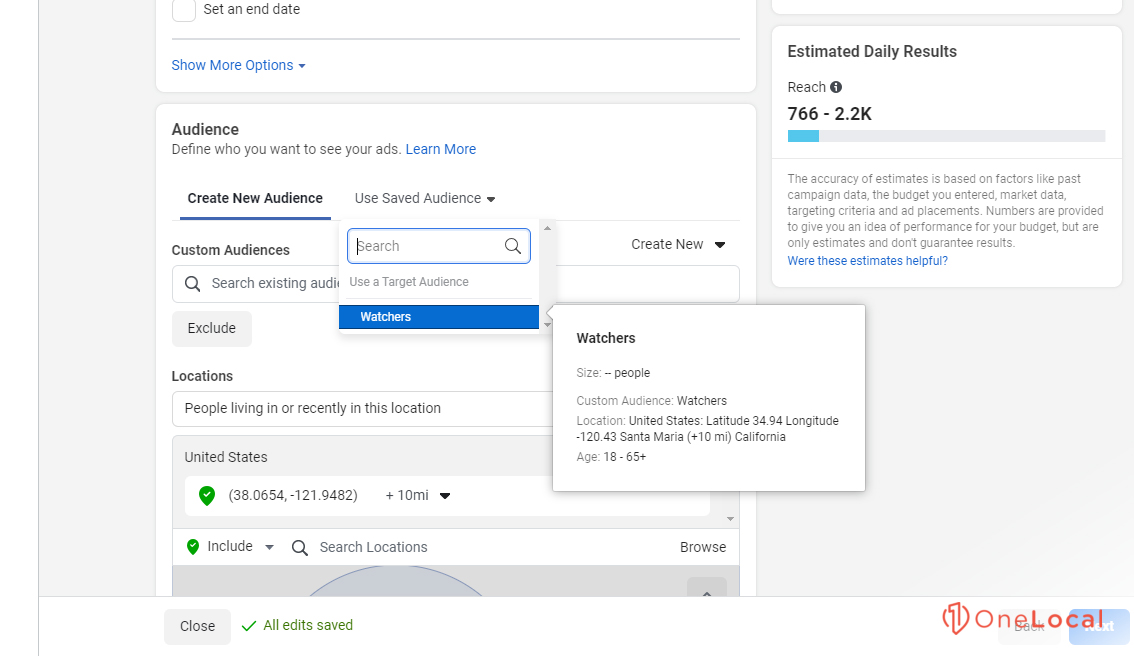 Go to the locations section and follow the instructions.
Go to the locations section and follow the instructions.
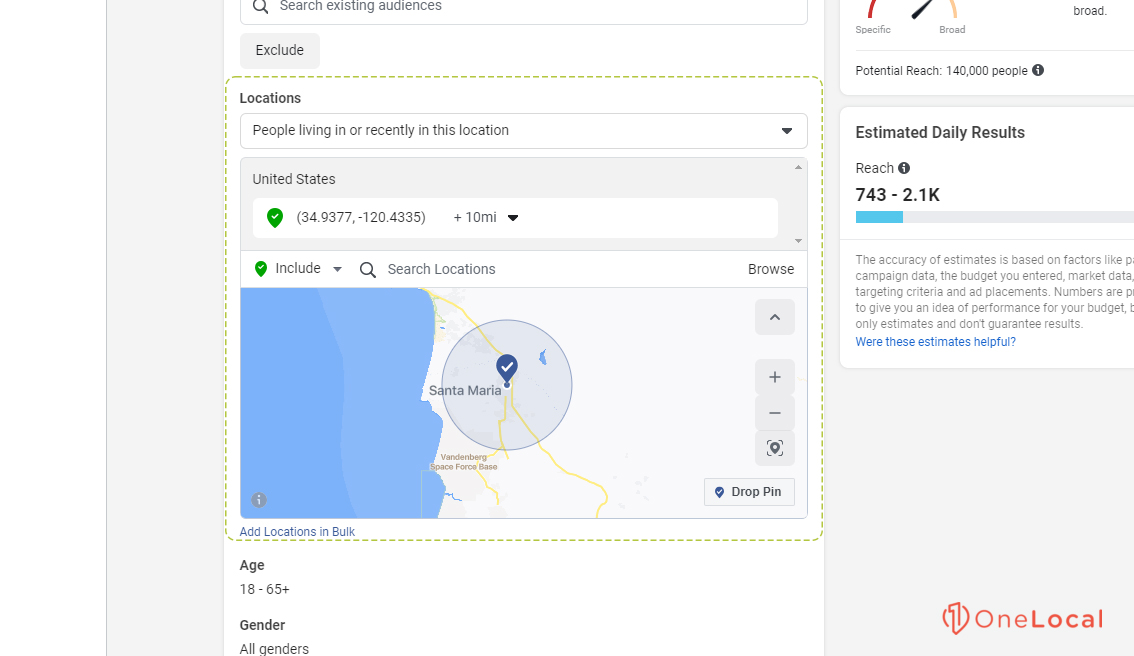 Facebook also allows you a lot of flexibility within geotargeting.
First up, you can choose which kind of audience you want to reach. There are four options:
Facebook also allows you a lot of flexibility within geotargeting.
First up, you can choose which kind of audience you want to reach. There are four options:
 For example, a landscaper might want to target specific neighborhoods with more lands to scape. It does them no good to target a downtown city center with very little or no green space or green space managed by a municipality. Likewise, it does them no good to target an area primarily full of rental properties, where the people seeing the ads are not the people responsible for groundskeeping. Instead, it may be better if they target more suburban or rural areas full of homeowners.
For example, a landscaper might want to target specific neighborhoods with more lands to scape. It does them no good to target a downtown city center with very little or no green space or green space managed by a municipality. Likewise, it does them no good to target an area primarily full of rental properties, where the people seeing the ads are not the people responsible for groundskeeping. Instead, it may be better if they target more suburban or rural areas full of homeowners.
 One common pitfall is using generic copy across different regions, rather than targeting each individually. A company advertising to each borough of New York City would do well to target each of them with distinct messaging, due to their own unique cultures.
One common pitfall is using generic copy across different regions, rather than targeting each individually. A company advertising to each borough of New York City would do well to target each of them with distinct messaging, due to their own unique cultures.
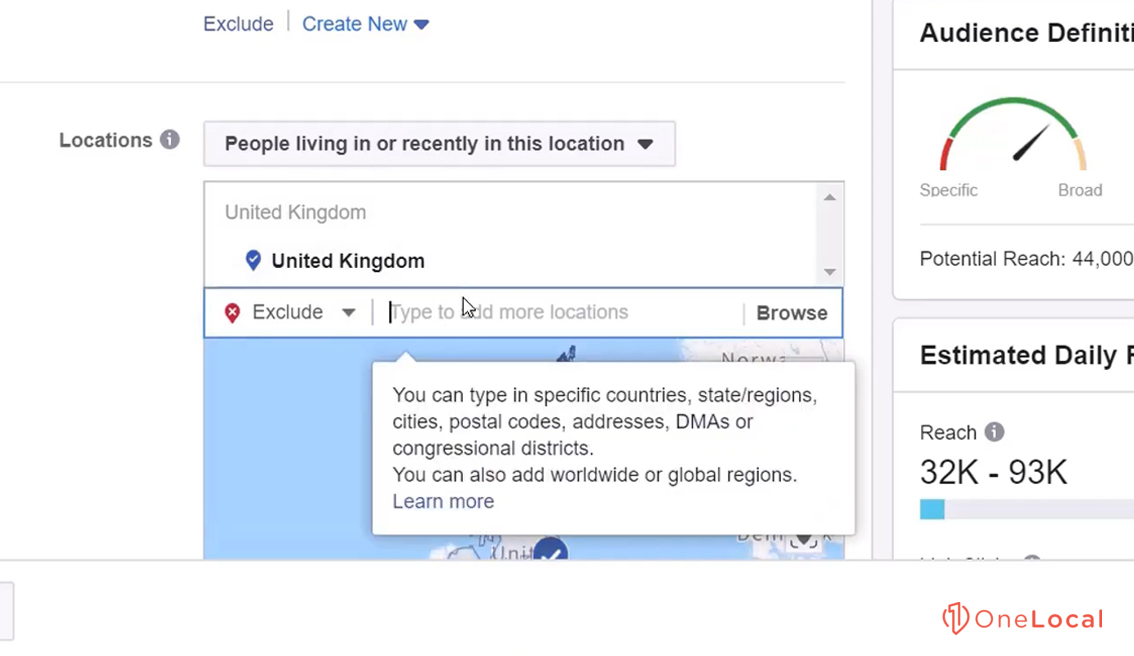 You can do this at multiple scales, as well. At the city level, you can break the region down by neighborhoods or postal codes. At the state level, you can use counties or any smaller unit. There’s a lot of nuances available.
You can do this at multiple scales, as well. At the city level, you can break the region down by neighborhoods or postal codes. At the state level, you can use counties or any smaller unit. There’s a lot of nuances available.
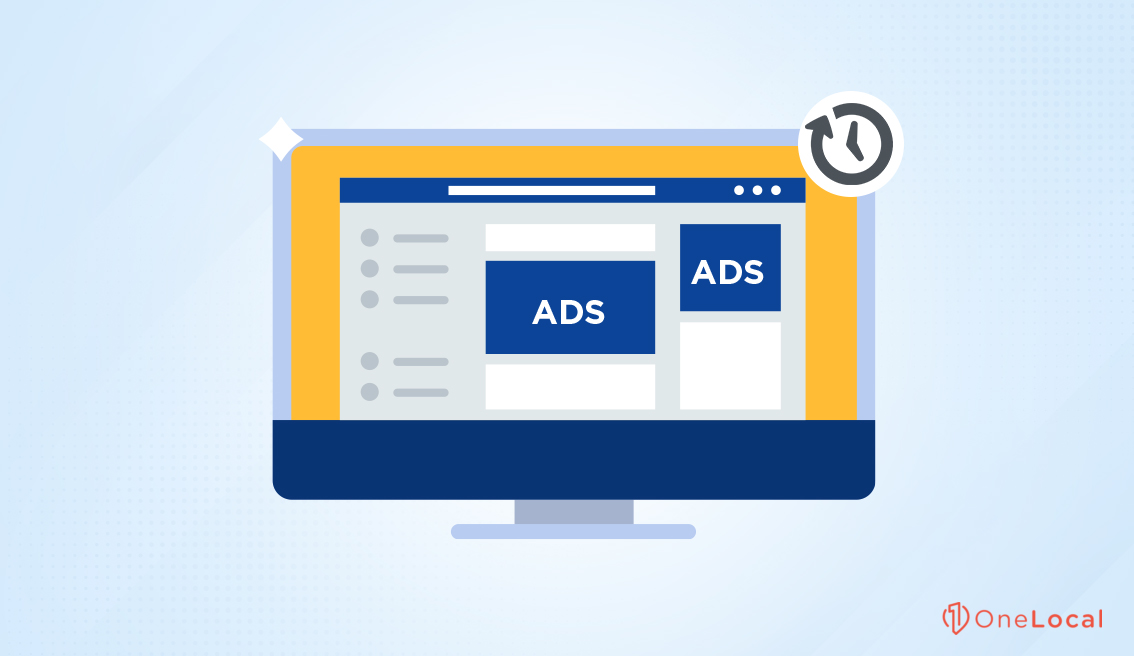 Sporting events, city events like fairs, or even just store sales can all be good reasons to use geotargeting for an advertising push.
Sporting events, city events like fairs, or even just store sales can all be good reasons to use geotargeting for an advertising push.
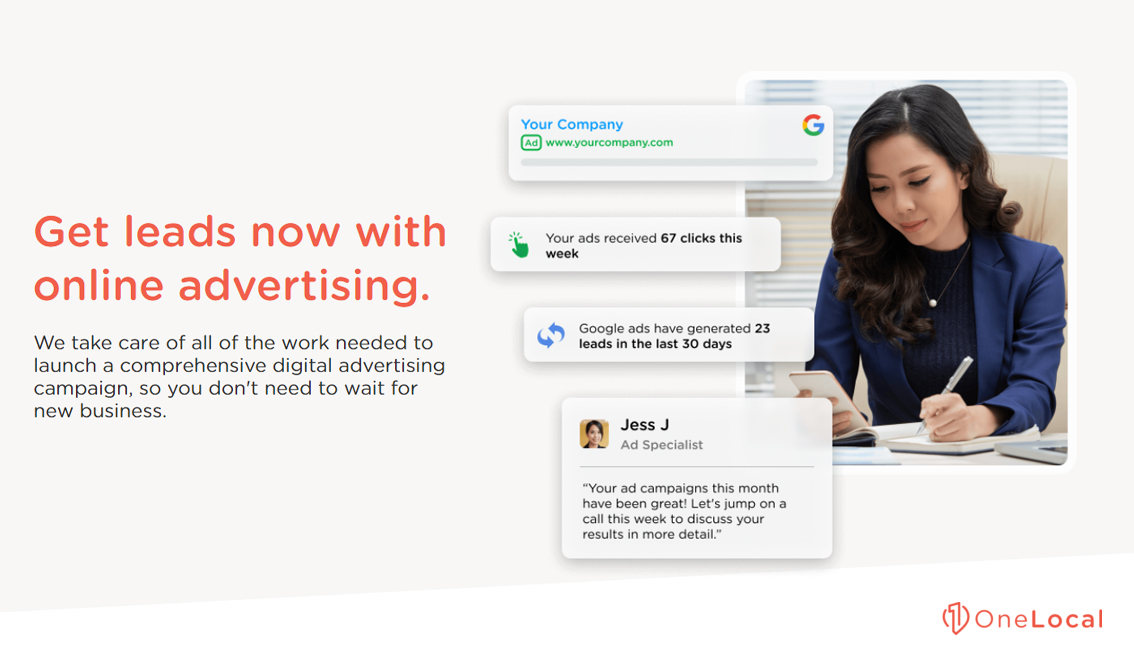 Here at OneLocal, we offer a variety of local-first, local-focused services, including specialized local advertising management. We have the skills and experience to run dedicated local advertising campaigns making use of the full capabilities of Facebook ads, as well as other platforms, including Google and other channels. We maximize budget and put conversions first, to get you the results your business needs. Contact us today if you’re interested in locally targeted advertising for your business, or if you have any additional questions or concerns.
Here at OneLocal, we offer a variety of local-first, local-focused services, including specialized local advertising management. We have the skills and experience to run dedicated local advertising campaigns making use of the full capabilities of Facebook ads, as well as other platforms, including Google and other channels. We maximize budget and put conversions first, to get you the results your business needs. Contact us today if you’re interested in locally targeted advertising for your business, or if you have any additional questions or concerns.
Table of Contents
What is Geolocal Advertising?
Geolocal advertising is identical to online marketing in nearly every way except one. That one way is that, rather than broad-spectrum targeting (like display advertising) or attribute targeting (like reaching people based on demographics, income level, education level, or interests), geolocal targeting restricts the advertisements from showing anywhere except within a fixed area. This offers a solution to the problem posed above. You can still invest in online advertising, but you can be assured that the only people you’re reaching with your advertising are those who have a chance to become customers, as opposed to reaching millions of people who have zero chance of converting.
There are two kinds of geolocal targeting: geotargeting and geofencing. Sometimes these terms are used interchangeably, but they are slightly different techniques with different use cases.
This offers a solution to the problem posed above. You can still invest in online advertising, but you can be assured that the only people you’re reaching with your advertising are those who have a chance to become customers, as opposed to reaching millions of people who have zero chance of converting.
There are two kinds of geolocal targeting: geotargeting and geofencing. Sometimes these terms are used interchangeably, but they are slightly different techniques with different use cases.
What is Geofencing?
Geofencing is the more complicated of the two and is a more recent development than geotargeting. Geofencing is the digital equivalent of drawing a “fence” or border around a specific area within your local area of operation. You might encircle the area around a stadium, the area around your local business, or the area around a local event where you’re catering. Advertising then uses this fence and only displays ads to people who are within this area. It does this by using IP address data and GPS data for mobile devices. You as a business do not need to know or interpret this data; it’s all used by Facebook on their end. Instead, you simply choose your target area (with a minimum radius of one mile) and run extremely targeted local advertising. Geofencing is powerful, but it’s narrow. Since an area can have ebbs and flows of traffic depending on the time of day, on events, and varying schedules, the number of people reached with ads can vary dramatically. Narrow targeting can also be expensive, so often these kinds of ads are restricted to special events when a larger number of people are clustered in the area.
Geofencing also frequently lacks additional targeting options. It’s all-or-nothing advertising for people within the fence and is not selective within that boundary.
Geofencing is powerful, but it’s narrow. Since an area can have ebbs and flows of traffic depending on the time of day, on events, and varying schedules, the number of people reached with ads can vary dramatically. Narrow targeting can also be expensive, so often these kinds of ads are restricted to special events when a larger number of people are clustered in the area.
Geofencing also frequently lacks additional targeting options. It’s all-or-nothing advertising for people within the fence and is not selective within that boundary.
“Geofencing refers to drawing a virtual barrier around a location using users’ IP addresses. Ads inside this parameter can be seen on a computer, tablet, or mobile device by any user within this location. Locations like universities, stadiums, and neighborhoods are often tightly targeted to an audience in that location that would likely be interested in local deals, businesses, or services. Some services, such as Snapchat, allow you to geofence a specific area by drawing a virtual fence on a map around the desired space to place ads or filters.” – Catalyst Marketing
What is Geotargeting?
Geotargeting is the older and simpler iteration of geolocal advertising. It is essentially one additional filter added to traditional advertising parameters. For example, you might have an ad that has targeting options like:- Age 18-35
- Completed some higher education
- Interested in fantasy novels and food blogs
- The user is within 10 miles of the address of the local business
 Geotargeting can be a positive filter or a negative filter. That is, it can include everyone within a certain area around a location, or it can exclude a certain location from targeting. This can be useful if you have two branches or franchises, and don’t want ads to overlap and direct users to the further location when a closer one is nearby.
Geotargeting can be a positive filter or a negative filter. That is, it can include everyone within a certain area around a location, or it can exclude a certain location from targeting. This can be useful if you have two branches or franchises, and don’t want ads to overlap and direct users to the further location when a closer one is nearby.
“Geotargeting refers to delivering ads to people that meet specific targeting criteria and are inside a defined radius. The key difference with geotargeting is that it hones in on specific consumer criteria, such as demographics, behaviors, interests, and a person’s location. Geotargeting can also exclude specific locations. This targeting tends to work better for larger geographical audiences because ads can be more specifically defined by demographics and keywords.” – Catalyst Marketing
How to Implement Geolocal Advertising on Facebook
Facebook is one of the more robust advertising platforms in the world, and it enables the use of massive amounts of data to filter and target people for advertising. When tuned properly, this can be among the best sources of advertising ROI available. When poorly tuned, it can be easy to waste a lot of money without knowing why. Facebook makes use of geotargeting. When you create an ad in the Facebook ads manager, you can add targeting options, including interests, behaviors, and demographics. Depending on your ad objective, you may also be able to add geotargeting as well. Most, though not all, ad objectives allow you to use geotargeting. Facebook is also currently in the process of rolling out more consolidated ad objectives, so this may change in the upcoming future.
To use geotargeting in your advertising:
Create an ad campaign.
Facebook makes use of geotargeting. When you create an ad in the Facebook ads manager, you can add targeting options, including interests, behaviors, and demographics. Depending on your ad objective, you may also be able to add geotargeting as well. Most, though not all, ad objectives allow you to use geotargeting. Facebook is also currently in the process of rolling out more consolidated ad objectives, so this may change in the upcoming future.
To use geotargeting in your advertising:
Create an ad campaign.
 Choose a campaign objective.
Choose a campaign objective.
 Choose an audience source, if you have one.
Choose an audience source, if you have one.
 Go to the locations section and follow the instructions.
Go to the locations section and follow the instructions.
 Facebook also allows you a lot of flexibility within geotargeting.
First up, you can choose which kind of audience you want to reach. There are four options:
Facebook also allows you a lot of flexibility within geotargeting.
First up, you can choose which kind of audience you want to reach. There are four options:
- People living in, or recently in, the location. This is the default and includes anyone within the geotargeted location radius.
- People living in the location. This is targeting specifically residents rather than tourists or travelers. This option is useful for some businesses, for example, landscapers, who do not benefit from targeting people who don’t live in the area.
- People recently in the location. This targets people who are in the area but who are not necessarily residents of the area.
- People traveling in the location. This is for people who are in the location but their residence is at least 125 miles away. Primarily useful for targeting tourists and travelers.
How to Succeed with Geotargeting on Facebook
Geotargeting is complicated and expensive to implement, so getting it wrong has a very real possibility of burning through a lot of money before you figure out how to get it right. Many businesses are understandably hesitant to do more than the basic location targeting.Understand Your Audience and Their Behaviors
The first thing you need to do to succeed is to understand what your audience is doing, where they are going, and when they would visit your business. Different kinds of businesses may have different targeting needs. For example, a landscaper might want to target specific neighborhoods with more lands to scape. It does them no good to target a downtown city center with very little or no green space or green space managed by a municipality. Likewise, it does them no good to target an area primarily full of rental properties, where the people seeing the ads are not the people responsible for groundskeeping. Instead, it may be better if they target more suburban or rural areas full of homeowners.
For example, a landscaper might want to target specific neighborhoods with more lands to scape. It does them no good to target a downtown city center with very little or no green space or green space managed by a municipality. Likewise, it does them no good to target an area primarily full of rental properties, where the people seeing the ads are not the people responsible for groundskeeping. Instead, it may be better if they target more suburban or rural areas full of homeowners.
Understand Objectives and Continuity in Messaging
Geotargeting does not obviate the need for other best practices in advertising. Ads must have continuity between messaging, recipient, landing page, and call to action. Adding in geotargeting just restricts the people who will see the ad. One common pitfall is using generic copy across different regions, rather than targeting each individually. A company advertising to each borough of New York City would do well to target each of them with distinct messaging, due to their own unique cultures.
One common pitfall is using generic copy across different regions, rather than targeting each individually. A company advertising to each borough of New York City would do well to target each of them with distinct messaging, due to their own unique cultures.
Use Exclusions to Narrow Targeting Within a Region
Exclusions can even reduce the radius of geotargeting smaller than the default 1-mile minimum radius. This can be very potent in certain circumstances. For example, if your business sits between two zip codes that you can’t advertise in for one reason or another (or that you want to use for other advertising), you can exclude those zip codes to narrow your effective advertising radius. You can do this at multiple scales, as well. At the city level, you can break the region down by neighborhoods or postal codes. At the state level, you can use counties or any smaller unit. There’s a lot of nuances available.
You can do this at multiple scales, as well. At the city level, you can break the region down by neighborhoods or postal codes. At the state level, you can use counties or any smaller unit. There’s a lot of nuances available.
Keep Temporal Advertising in Mind
One of the biggest benefits of using geotargeting is the ability to run short-duration, high-value advertising centering around events. Sporting events, city events like fairs, or even just store sales can all be good reasons to use geotargeting for an advertising push.
Sporting events, city events like fairs, or even just store sales can all be good reasons to use geotargeting for an advertising push.
Sound Complicated? Contact Us
The truth is, there’s a lot of risk in managing Facebook ads, especially for a local business. Any time you’re spending money to reach people who don’t have a real chance to convert is money wasted. Given how complex and multifaceted Facebook advertising is, why not offload the responsibility to someone who has a depth of experience in managing exactly this kind of advertising? Here at OneLocal, we offer a variety of local-first, local-focused services, including specialized local advertising management. We have the skills and experience to run dedicated local advertising campaigns making use of the full capabilities of Facebook ads, as well as other platforms, including Google and other channels. We maximize budget and put conversions first, to get you the results your business needs. Contact us today if you’re interested in locally targeted advertising for your business, or if you have any additional questions or concerns.
Here at OneLocal, we offer a variety of local-first, local-focused services, including specialized local advertising management. We have the skills and experience to run dedicated local advertising campaigns making use of the full capabilities of Facebook ads, as well as other platforms, including Google and other channels. We maximize budget and put conversions first, to get you the results your business needs. Contact us today if you’re interested in locally targeted advertising for your business, or if you have any additional questions or concerns. 
Rachel Solway is a seasoned marketing professional dedicated to empowering small businesses through innovative marketing strategies. With extensive experience at OneLocal, a leading marketing solutions provider, Rachel’s insights are helping thousands of local businesses navigate the digital landscape.

